Door Furniture Terminology
Lever lock handles
Lever lock handles have a keyhole cut into the back plate. They are used in conjunction with a mortice sash lock, which is usually 2.1/2in (64mm) or 3in (75mm) wide and consists of a latch and a deadbolt. The sash lock is fitted into the edge of the door whereas the handles are fitted to either side of the door and are connected by a spindle located in the back of the levers. When the levers are pressed, the spindle rotates and operates the latch in the sash lock allowing the door to open. When the key is turned the deadbolt is operated, locking the door. The handles are supplied complete with the spindle and fixing screws, but not with the lock which needs to be purchased as a separate item, and is normally specified to have a matching finish to the handles.
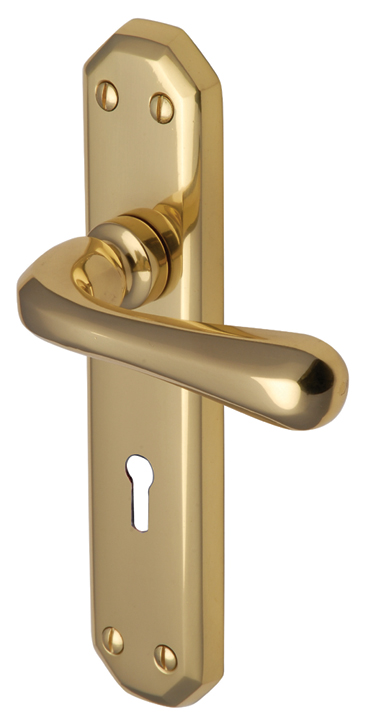
Lever latch handles
Lever latch handles have a plain back plate. They are used in conjunction with either a mortice or tubular latch, which are normally 2.1/2in (64mm) or 3in (75mm) long, although longer sizes can be obtained if the handles need to be placed further in from the door edge. The latch is fitted into the edge of the door whereas the handles are fitted to either side of the door and are connected by a spindle located in the back of the levers. When the levers are pressed, the spindle rotates and operates the latch allowing the door to open. The handles are supplied complete with the spindle and fixing screws, but not with the latch, which needs to be purchased as a separate item, and is normally specified to have a matching finish to the handles.
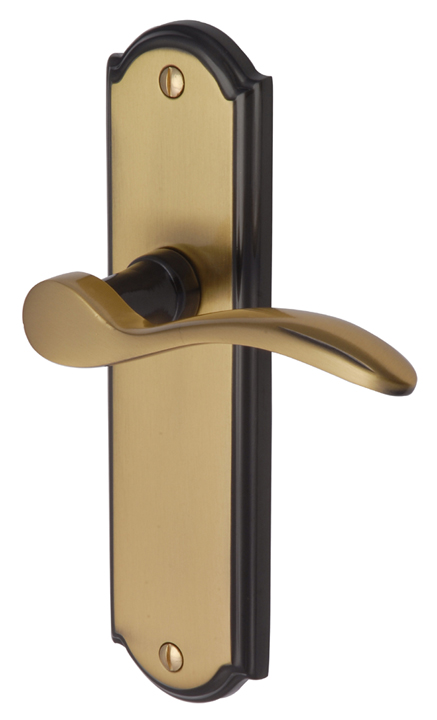
Bathroom Handles
Bathroom locking handles are used with a bathroom mortice lock, which is usually 2.1/2in (64mm) or 3in (75mm) wide and consists of a latch and a deadbolt. The bathroom lock is mortised into the edge of the door whereas the handles are fitted to either side of the door and are connected by a spindle located in the back of the levers. When the levers are pressed, the spindle rotates and operates the latch allowing the door to open. On the handle fitted to the inside of the door there is a button which when turned, operates the deadbolt on the bathroom mortice lock. On the handle fitted to the outside of the door there is an emergency release slot, usually operated by a coin or screwdriver, which can be used to unlock the door in an emergency. The turn button and the emergency release are connected by use of a smaller spindle, which passes through the bathroom lock. The handles are supplied complete with both spindles and fixing screws, but not with the lock, which needs to be purchased as a separate item, and is normally specified to have a matching finish to the handles.
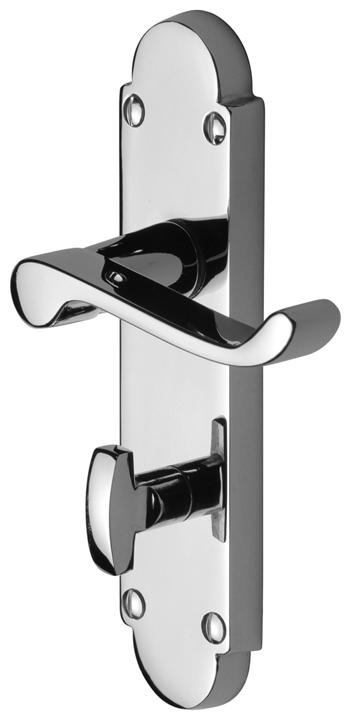
Privacy Handles
Privacy handles can be used on bathroom/bedroom doors or where privacy is required. These handles are normally used with a tubular latch, which is 2.1/2in (64mm) or 3in (75mm) long although longer sizes can be obtained if the handles need to be placed further in from the door edge. The tubular latch is mortised into the edge of the door whereas the handles are fitted to either side of the door and are connected by a spindle located in the back of the levers. When the levers are pressed, the spindle rotates and operates the latch allowing the door to open. On the handle fitted to the inside of the door there is a turn button. When the button is operated it “locks” the tubular latch preventing the bathroom/bedroom door from being opened, except by turning the button again or by using the emergency release slot on the handle fitted to the outside of the door. The emergency release slot is usually operated by a coin or screwdriver. The handles are supplied complete with the spindle and fixing screws, but not with the latch, which needs to be purchased as a separate item, and is normally specified to have a matching finish to the handles.
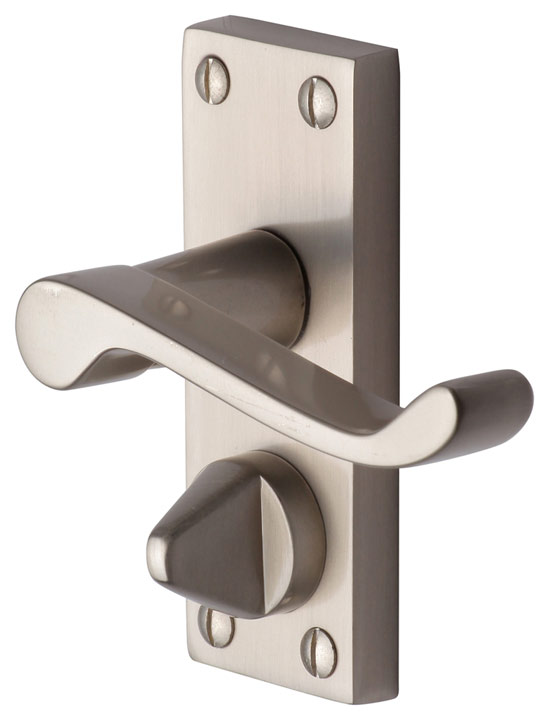
Euro Profile Handles
Euro profile handles have an enlarged keyhole shape cut out of the back plate. This euro cut out in the back plate is used to house a key operated cylinder. The cylinder is used with a sash lock, which consists of a latch and a deadbolt and is mortised into the edge of the door. The lock also has the euro shape cut into it to allow the cylinder to pass through and come out on the opposite side of the door. These cylinders come in various lengths depending on the thickness of the door and various styles such as double key, key and turn, or single cylinder. The handles are fitted to either side of the door and are connected by a spindle located in the back of the levers. When the levers are pressed, the spindle rotates and operates the latch allowing the door to open. When the key or thumb turn is operated, the deadbolt on the lock is thrown and the door is then locked. The centre size refers to the distance between the centre of the spindle and the centre of the cylinder as dictated by the lock design. The handles are supplied complete with the spindle and fixing screws, but not with the lock or cylinder, which need to be purchased separately, and are normally specified to have a matching finish to the handles.
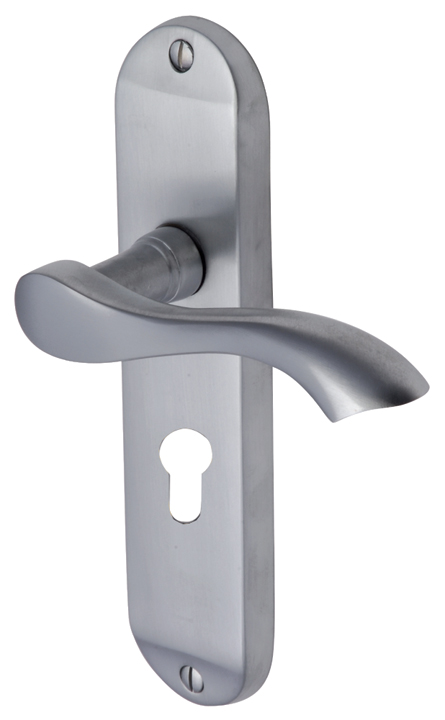
Oval Profile Handles
Oval profile handles have an oval shape cut out of the back plate. This oval cut out in the back plate is used to house a key operated cylinder. The cylinder is used with a sash lock, which consists of a latch and a deadbolt and is mortised into the edge of the door. The lock also has an oval shape cut into it to allow the cylinder to pass through and come out on the opposite side of the door. These cylinders come in various lengths depending on the thickness of the door and various styles such as double key, key and turn, or single cylinder. The handles are fitted to either side of the door and are connected by a spindle located in the back of the levers. When the levers are pressed, the spindle rotates and operates the latch allowing the door to open. When the key or thumb turn is operated, the deadbolt on the lock is thrown and the door is then locked. The handles are supplied complete with the spindle and fixing screws, but not with the lock or cylinder, which need to be purchased separately, and are normally specified to have a matching finish to the handles.
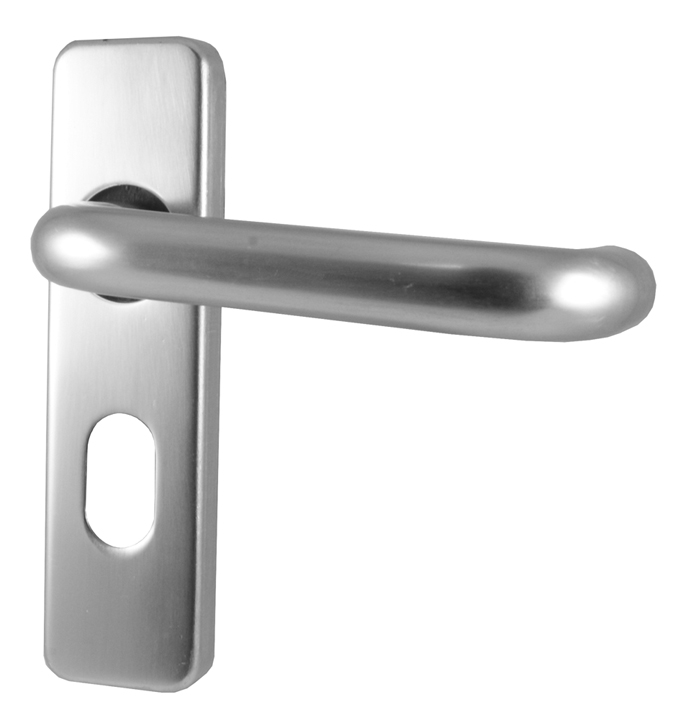
Levers On Rose
Levers on rose handles can be used with a latch where the door is not required to lock; a bathroom lock where you would also need to use a turn and release; or a mortice sash lock where you would also need to use a pair of escutcheons. The locks and latches are usually 2.1/2in (64mm) or 3in (75mm) wide, although longer sizes can be obtained if the handles need to be placed further in from the door edge. When using the levers with a turn and release or escutcheons, these are fitted directly below the rose of the levers and are normally of a matching size and finish. The latch or lock is fitted into the edge of the door whereas the handles are fitted to either side of the door and are connected by a spindle located in the back of the levers. When the levers are pressed, the spindle rotates and operates the latch allowing the door to open. The levers are supplied complete with the spindle and fixing screws, but not with the latch or lock, which need to be purchased as a separate item, and are normally specified to have a matching finish to the levers.
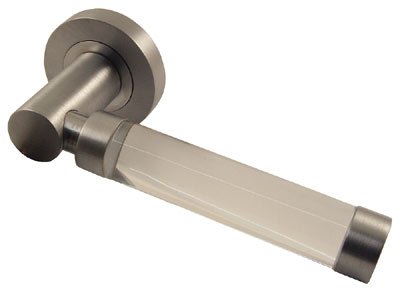
Mortice Knobs
Mortice knobs can be used with a latch where the door is not required to lock; a bathroom lock where you would also need to use a turn and release; or a mortice sash lock where you would also need to use a pair of escutcheons.The locks and latches are usually 2.1/2in (64mm) or 3in (75mm) wide, although longer sizes can be obtained if the knobs need to be placed further in from the door edge. Generally when using a knob rather than levers, a longer latch is required to stop your knuckles from scraping on the edge of the door frame. When using a mortice knob with a turn and release or escutcheons, these are fitted directly below the rose of the knobs and are normally of a matching size and finish. The latch or lock is fitted into the edge of the door whereas the mortice knobs are fitted to either side of the door and are connected by a spindle. When the knobs are turned, the spindle rotates and operates the latch allowing the door to open. The mortice knobs are supplied complete with the spindle and fixing screws, but not with the latch or lock, which need to be purchased as a separate item, and are normally specified to have a matching finish to the knobs.
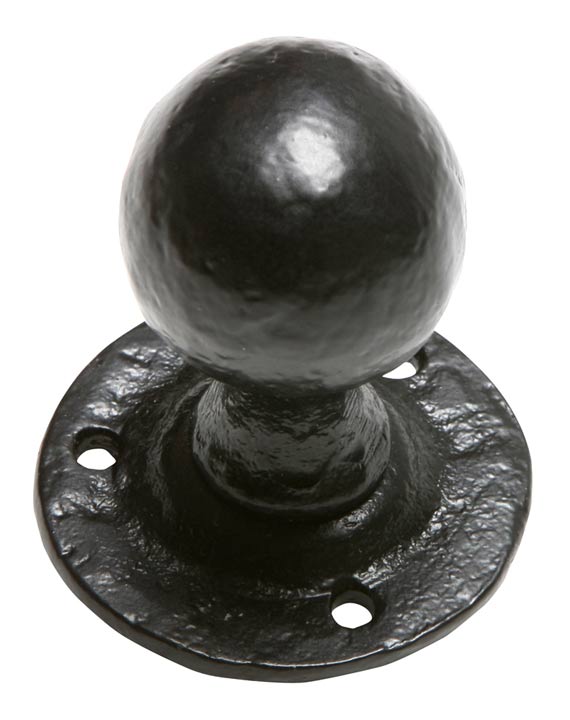
Rim Furniture
Rim furniture is used in conjunction with a rim lock or latch that is fitted to the outside face of the door as opposed to a mortice lock, which is fitted into the door edge. Rim furniture consists of two knobs, (one with a fixed rose and one without a rose), a spindle and screws. Sometimes a single escutcheon is also supplied. The knob with the fixed rose is fitted to the opposite side of the door to the lock and is fixed to the door in the normal way usually using screws located through the holes in the rose. The spindle located in the back of the fixed rose knob, passes through the door and the rim lock. The second knob is then fixed usually by means of a small grub screw that passes through the neck of the knob, onto the spindle. The second knob does not need a rose as the neck of the knob fits tight against the actual rim lock. Where the rim lock uses a key, an escutcheon is fitted on the opposite door face to the rim lock. Rim furniture is normally specified to have a matching finish to the rim lock or latch.
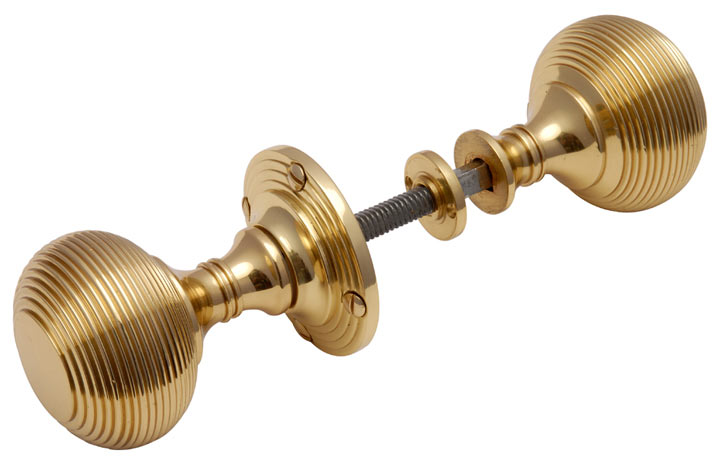
DISCLAIMER Door Furniture Direct makes every effort to ensure that the information contained in our FAQs is correct and accurate. We can however accept no responsibility for any errors or omissions or their subsequent effects. Indeed if you find any please let us know, we appreciate any advice or comments to improve these pages.
